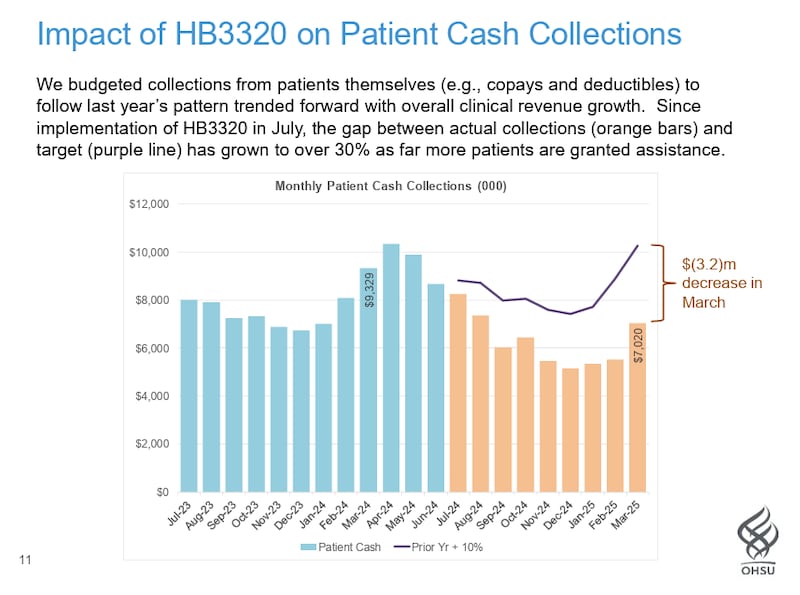Oregon Health & Science University is losing about $8 million a month as larger post-pandemic salaries and higher costs for supplies soak up revenue.
In the first nine months of its fiscal year ending June 30, OHSU lost $71 million from operations, narrower than the $87 million deficit it had in the same period last year. Revenue from operations rose 11.5% to $4.1 billion from $3.7 billion.
The results show that OHSU is still struggling to break even while it pursues its purchase of Legacy Health, which would add 14,000 employees to its own 22,000. Both OHSU and Legacy say the deal is necessary because Legacy is hurting for cash.
WW examined the ramifications of that merger in a cover story this week.
National comparisons show that OHSU is struggling to keep up in some areas, too. According to Fitch Ratings, a firm that assesses hospitals’ ability to pay their debt, median labor costs as a percentage of hospital revenue fell from 55.4% to 54.5% in the fiscal year ended June 30, 2024. OHSU’s rose from 59.9% to 63%.
Median operating margin improved from a negative 0.5% to a positive 1.2%, Fitch said. OHSU’s operating margin fell from a positive 1.2% to a negative 1.9%.
OHSU presented the results at a board meeting today, where chief research officer Peter Barr-Gillespie made dire warnings about the future of OHSU research.
“I think it is possible that as much as 75% of all research activity could be gone within a year,” Barr-Gillespie said in a memo to the board. “We are facing threats locally, because of OHSU finances; at the state level, because of the interference of elected officials in OHSU decision making; and especially at the federal level, where the new administration appears intent on dismantling [the National Institutes of Health] and other federal agencies that fund science, replacing them with political organizations.”
The biggest threat, he said, was from the Trump administration, which seeks to slash the amount of research money available from NIH, a major funder to academic medical centers like OHSU.
Grant funding is already falling off, Barr-Gillespie said. NIH grants for diversity, equity and inclusion training and for research on COVID-19 have been “terminated,” he said.
New grants, and ones that OHSU must compete to renew, are becoming scarce, too. In the first nine months of the 2024 fiscal year, OHSU got 134 of those grants. In the first nine months of this year, it got just 11.
State legislative action aimed at preventing Oregonians from incurring enormous medical debt is playing havoc with OHSU’s collections for care. The law, which began as House Bill 3320 in the 2023 session, requires hospitals to screen patients with bills of $500 to see if they are eligible for financial assistance.
Before the law went into effect Jan. 1, 2024, OHSU asked people to apply for aid.
“We did not expect HB3320 to have a major impact since OHSU’s existing program was seen as a model,” OHSU said in a presentation. “However, the presumptive screening process (using a third-party estimating tool) is currently identifying 64% of patients eligible, compared to 12% under the prior ‘application’ process.”
As a result, cash collections fell to $7 million in March from $9.3 million a year ago.

